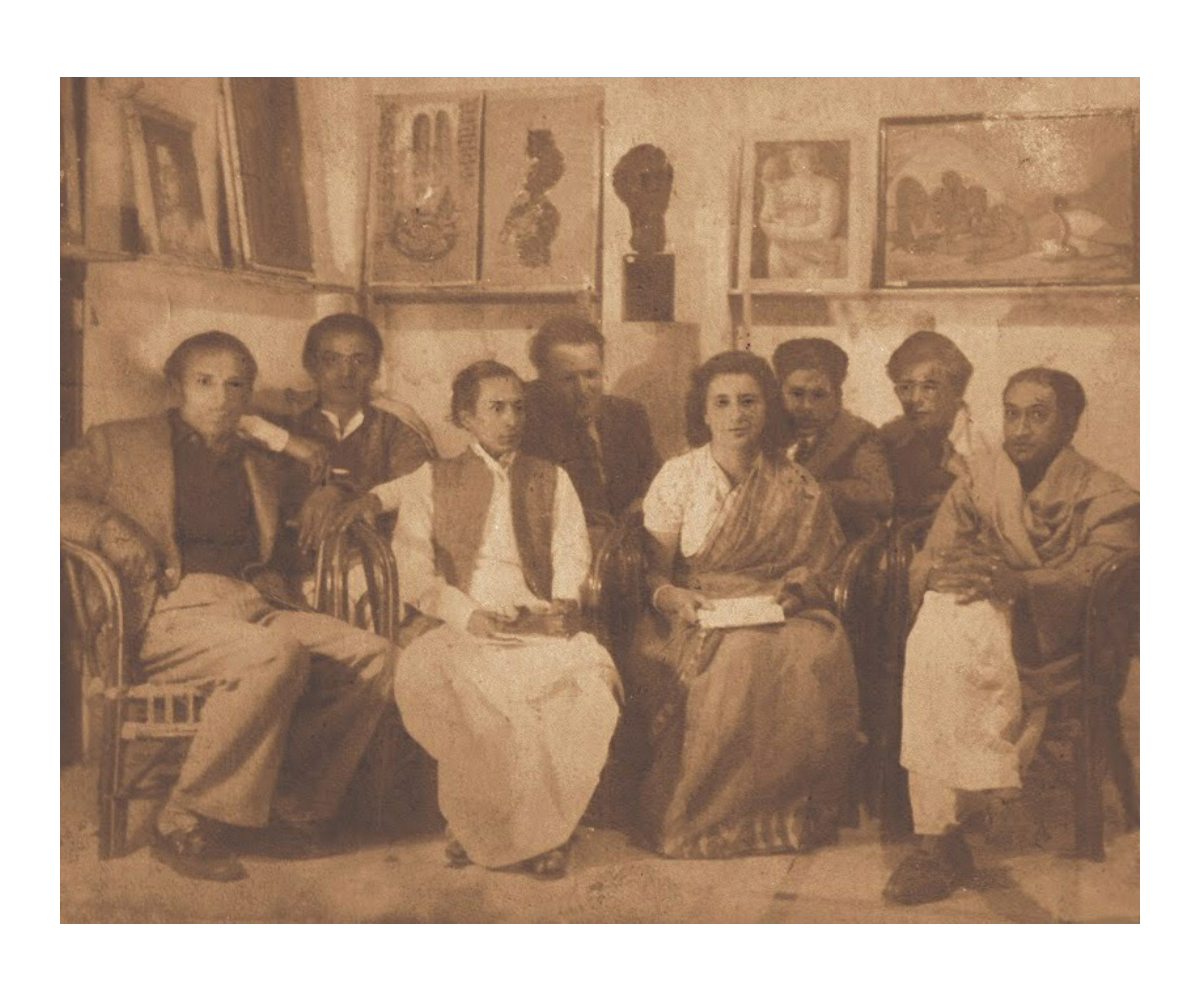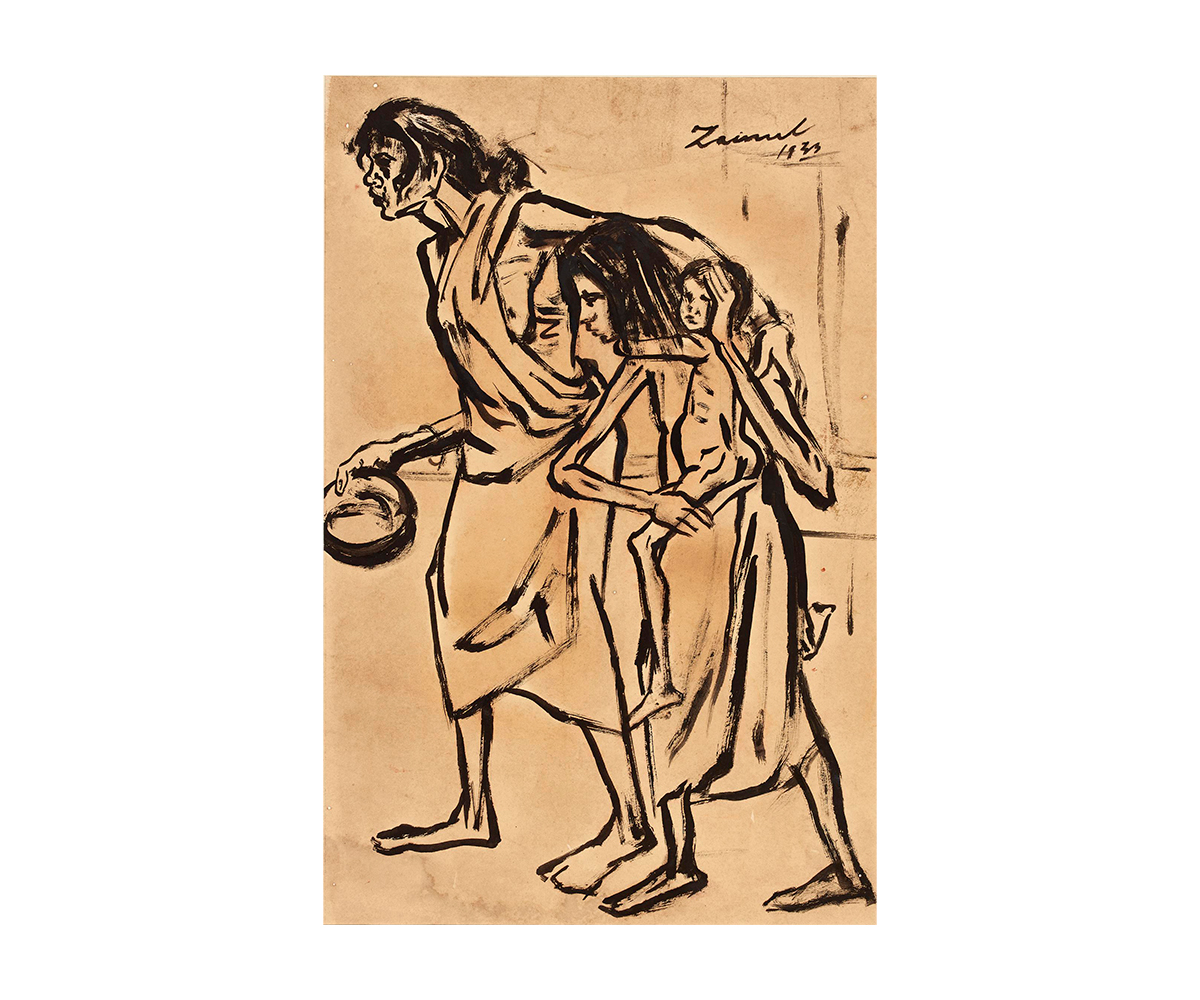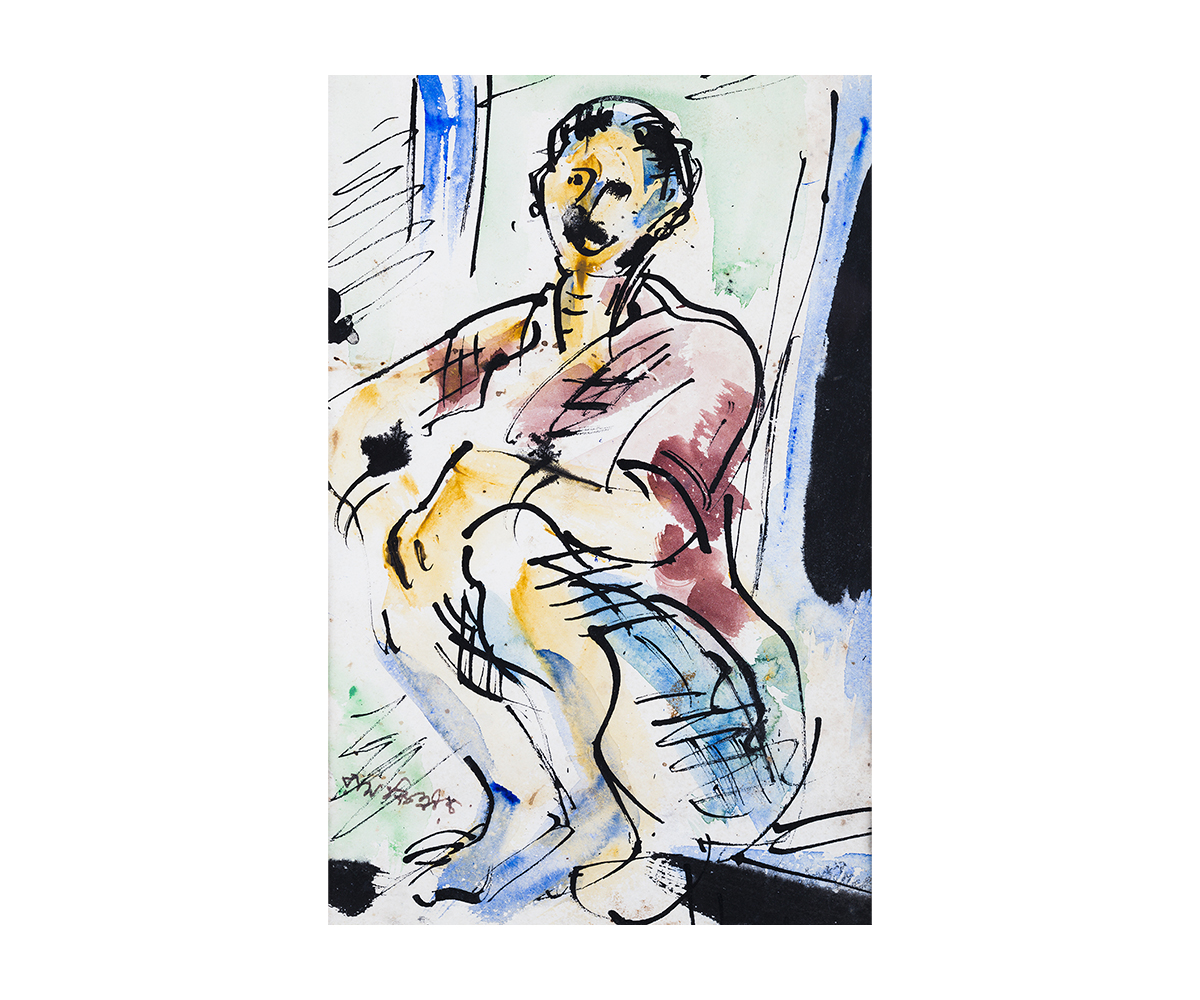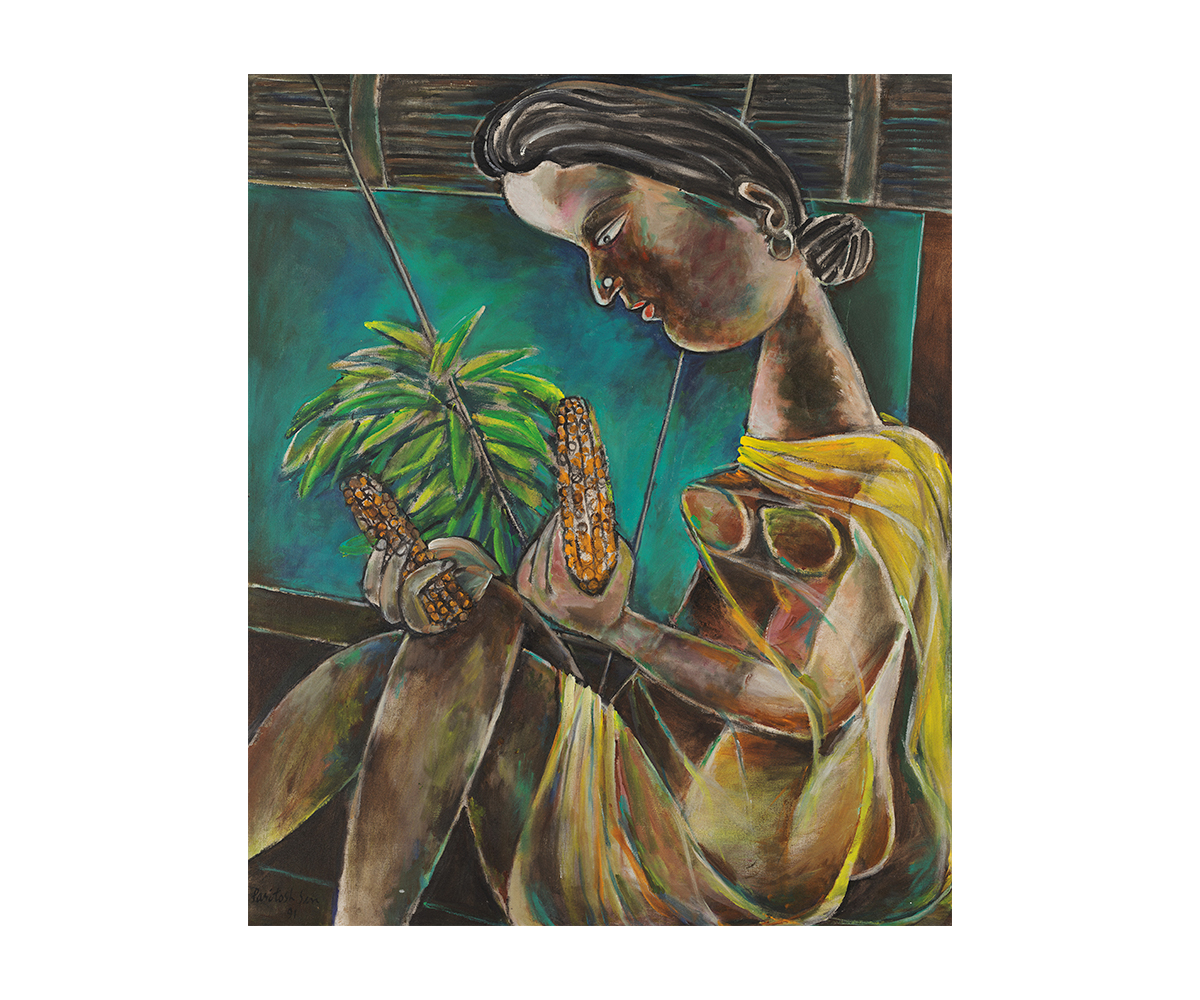ARTICLE
Calcutta Group
One of the first artist collectives in India, the Calcutta Group was established in 1943 in Calcutta (now Kolkata) and marked an ideological shift from the romanticism and mythological preoccupations of the Bengal School. The Group incorporated elements of international art movements in their work, declassifying Indian art from its Revivalist categorisations.
By the late 1920s, artists and intellectuals of the Bengal School had begun exploring art movements outside India, due to criticism by artists such as Rabindranath Tagore, Gaganendranath Tagore, Jamini Roy and Amrita Sher-Gil, who believed that the approaches of the School lacked authenticity and stagnated the development of Indian art. Instead, they advocated for work created within an international context. These critiques informed the principles of the Calcutta Group, whose artists aimed to incorporate elements from Western modern art practices while remaining rooted in Indian artistic traditions. The Group was further embedded within the historico-political setting of Bengal of the early 1940s, and its artists sought new means of expression that could accurately represent the social upheaval that resulted from World War II and the Bengal famine of 1943. While several members of the Calcutta Group created works in response to the rampant political unrest in the country — as in Zainul Abedin’s documentation of the Bengal famine — the Group did not claim any political leanings, instead asserting that their work aligned with humanist values.
The Group began with eight members, namely Nirode Mazumdar, Subho Tagore, Gopal Ghose, Paritosh Sen, Rathin Maitra, Pran Krishna Pal, Kamala Das Gupta and Prodosh Das Gupta, and later expanded to include Ramkinkar Baij, Gobardhan Ash, Abani Sen, Sunil Madhav Sen, Hemanta Misra and Zainul Abedin. While members of the Group made progressive advancements in exploring the aesthetics, style, form and subject of their work, they did not share artistic or stylistic similarities, as evident in the diverse approaches to their individual work, such as Ghose’s watercolour landscapes, Prodosh Das Gupta’s human sculptures, Sen’s Cubist approach to depicting daily life in the city and Mazumdar’s incorporation of European Modernism with the pictorial heritage of West Bengal.
The Group was active for nearly a decade, organising lectures and talks on art, as well as annual shows of their work. In its early days, members met every evening at Das Gupta’s studio in South Calcutta and later moved their headquarters to Subho Tagore’s home, where they also held their first exhibition in 1944. This exhibition, which was also shown in Bombay the following year, was instrumental in reinforcing the Group as a progressive artist collective heading a new art movement in India. They also held a joint exhibition with the Bombay Progressive Artists’ Group in Calcutta in 1950.
The Group’s activities had dwindled considerably by the early 1950s, and following their last show, held in Delhi in 1953, the Group dispersed. Today, the Calcutta Group is considered to have played a major role in shaping the landscape of Indian Modernism and motivating the establishment of other avant garde artist societies and groups in India, notably the Bombay Progressive Artists’ Group.
Bibliography
Our website is currently undergoing maintenance and re-design, due to which we have had to take down some of our bibliographies. While these will be re-published shortly, you can request references for specific articles by writing to hellomapacademy@map-india.org.










